The effects of intranasal oxytocin on reward circuitry responses in children with autism spectrum disorder
- PMID: 29587625
- PMCID: PMC5870086
- DOI: 10.1186/s11689-018-9228-y
The effects of intranasal oxytocin on reward circuitry responses in children with autism spectrum disorder
Abstract
Background: Intranasal oxytocin (OT) has been shown to improve social communication functioning of individuals with autism spectrum disorder (ASD) and, thus, has received considerable interest as a potential ASD therapeutic agent. Although preclinical research indicates that OT modulates the functional output of the mesocorticolimbic dopamine system that processes rewards, no clinical brain imaging study to date has examined the effects of OT on this system using a reward processing paradigm. To address this, we used an incentive delay task to examine the effects of a single dose of intranasal OT, versus placebo (PLC), on neural responses to social and nonsocial rewards in children with ASD.
Methods: In this placebo-controlled double-blind study, 28 children and adolescents with ASD (age: M = 13.43 years, SD = 2.36) completed two fMRI scans, one after intranasal OT administration and one after PLC administration. During both scanning sessions, participants completed social and nonsocial incentive delay tasks. Task-based neural activation and connectivity were examined to assess the impact of OT relative to PLC on mesocorticolimbic brain responses to social and nonsocial reward anticipation and outcomes.
Results: Central analyses compared the OT and PLC conditions. During nonsocial reward anticipation, there was greater activation in the right nucleus accumbens (NAcc), left anterior cingulate cortex (ACC), bilateral orbital frontal cortex (OFC), left superior frontal cortex, and right frontal pole (FP) during the OT condition relative to PLC. Alternatively, during social reward anticipation and outcomes, there were no significant increases in brain activation during the OT condition relative to PLC. A Treatment Group × Reward Condition interaction revealed relatively greater activation in the right NAcc, right caudate nucleus, left ACC, and right OFC during nonsocial relative to social reward anticipation during the OT condition relative to PLC. Additionally, these analyses revealed greater activation during nonsocial reward outcomes during the OT condition relative to PLC in the right OFC and left FP. Finally, functional connectivity analyses generally revealed changes in frontostriatal connections during the OT condition relative to PLC in response to nonsocial, but not social, rewards.
Conclusions: The effects of intranasal OT administration on mesocorticolimbic brain systems that process rewards in ASD were observable primarily during the processing of nonsocial incentive salience stimuli. These findings have implications for understanding the effects of OT on neural systems that process rewards, as well as for experimental trials of novel ASD treatments developed to ameliorate social communication impairments in ASD.
Keywords: Autism spectrum disorder; Oxytocin; Reward; fMRI.
Conflict of interest statement
Ethics approval and consent to participate
This protocol was approved by the Institutional Review Boards at Duke University Medical Center and the University of North Carolina at Chapel Hill, and informed consent was obtained from the parent or guardian of each participant before testing. Each participant 12 years old or above also provided verbal and written assent.
Consent for publication
Not applicable.
Competing interests
The authors declare that they have no competing interests.
Publisher’s Note
Springer Nature remains neutral with regard to jurisdictional claims in published maps and institutional affiliations.
Figures
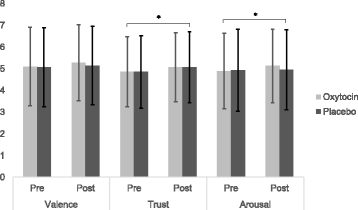
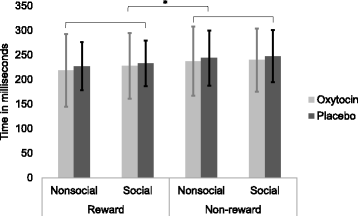
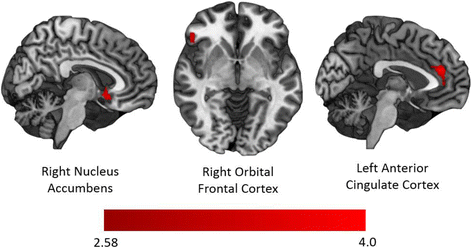
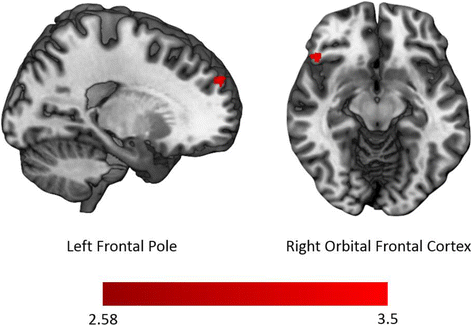
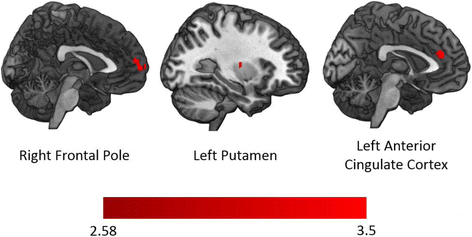
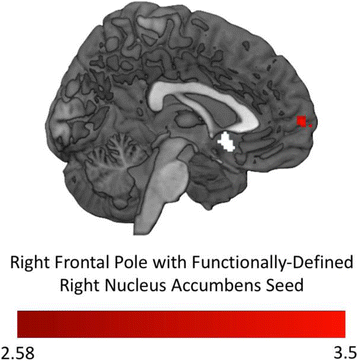
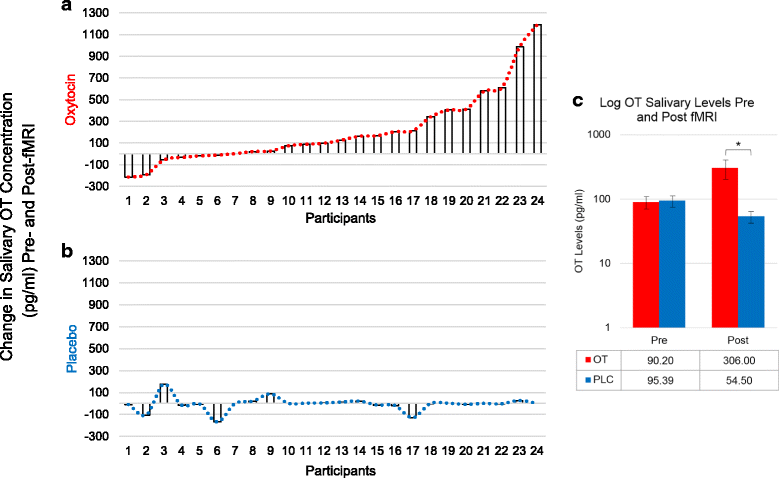
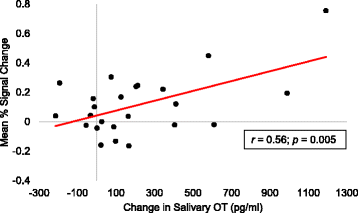
Similar articles
-
Intranasal Oxytocin Enhances Connectivity in the Neural Circuitry Supporting Social Motivation and Social Perception in Children with Autism.Sci Rep. 2016 Nov 15;6:35054. doi: 10.1038/srep35054. Sci Rep. 2016. PMID: 27845765 Free PMC article. Clinical Trial.
-
Neural Mechanisms of Social and Nonsocial Reward Prediction Errors in Adolescents with Autism Spectrum Disorder.Autism Res. 2020 May;13(5):715-728. doi: 10.1002/aur.2273. Epub 2020 Feb 11. Autism Res. 2020. PMID: 32043748 Free PMC article.
-
Oxytocin impacts top-down and bottom-up social perception in adolescents with ASD: a MEG study of neural connectivity.Mol Autism. 2022 Sep 5;13(1):36. doi: 10.1186/s13229-022-00513-6. Mol Autism. 2022. PMID: 36064612 Free PMC article. Clinical Trial.
-
Evaluation of the Social Motivation Hypothesis of Autism: A Systematic Review and Meta-analysis.JAMA Psychiatry. 2018 Aug 1;75(8):797-808. doi: 10.1001/jamapsychiatry.2018.1100. JAMA Psychiatry. 2018. PMID: 29898209 Free PMC article.
-
Social and Nonsocial Reward Anticipation in Typical Development and Autism Spectrum Disorders: Current Status and Future Directions.Curr Psychiatry Rep. 2021 Apr 13;23(6):32. doi: 10.1007/s11920-021-01247-7. Curr Psychiatry Rep. 2021. PMID: 33851268 Review.
Cited by
-
Rationale, design, and methods of the Autism Centers of Excellence (ACE) network Study of Oxytocin in Autism to improve Reciprocal Social Behaviors (SOARS-B).Contemp Clin Trials. 2020 Nov;98:106103. doi: 10.1016/j.cct.2020.106103. Epub 2020 Aug 8. Contemp Clin Trials. 2020. PMID: 32777383 Free PMC article.
-
Drug development for Autism Spectrum Disorder (ASD): Progress, challenges, and future directions.Eur Neuropsychopharmacol. 2021 Jul;48:3-31. doi: 10.1016/j.euroneuro.2021.05.010. Epub 2021 Jun 19. Eur Neuropsychopharmacol. 2021. PMID: 34158222 Free PMC article. Review.
-
Effects of chronic intranasal oxytocin on behavior and cerebral glucose uptake in juvenile titi monkeys.Psychoneuroendocrinology. 2020 Mar;113:104494. doi: 10.1016/j.psyneuen.2019.104494. Epub 2019 Oct 31. Psychoneuroendocrinology. 2020. PMID: 31862614 Free PMC article.
-
Adolescents With Autism Spectrum Disorder and Anorexia Nervosa Comorbidity: Common Features and Treatment Possibilities With Cognitive Remediation Therapy and Oxytocin.Front Psychiatry. 2021 Aug 3;12:686030. doi: 10.3389/fpsyt.2021.686030. eCollection 2021. Front Psychiatry. 2021. PMID: 34413796 Free PMC article. Review.
-
Intranasal Peptide Therapeutics: A Promising Avenue for Overcoming the Challenges of Traditional CNS Drug Development.Cells. 2022 Nov 16;11(22):3629. doi: 10.3390/cells11223629. Cells. 2022. PMID: 36429060 Free PMC article. Review.
References
-
- American Psychiatric Association . Diagnostic and statistical manual of mental disorders. 5. Washington: American Psychiatric Association; 2013.
Publication types
MeSH terms
Substances
Grants and funding
LinkOut - more resources
Full Text Sources
Other Literature Sources
Medical

